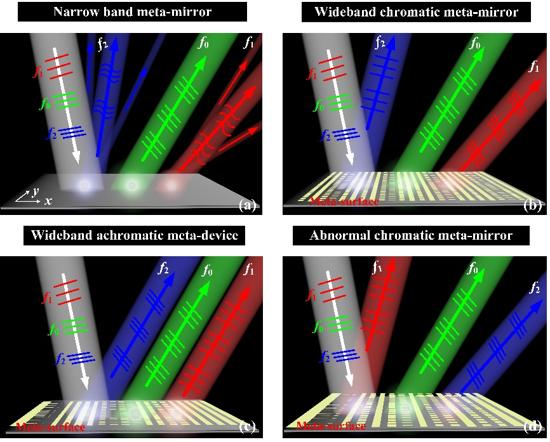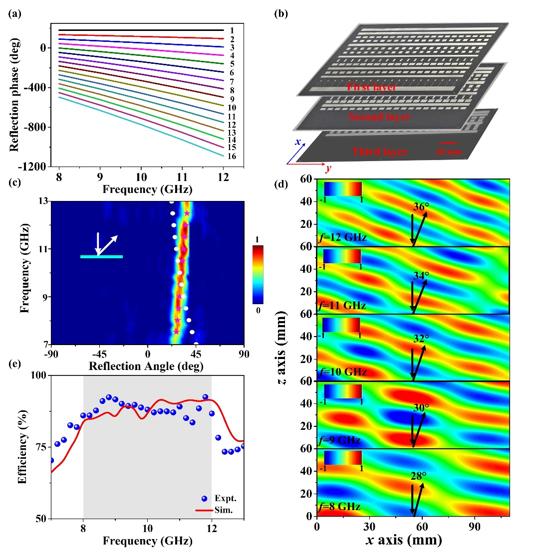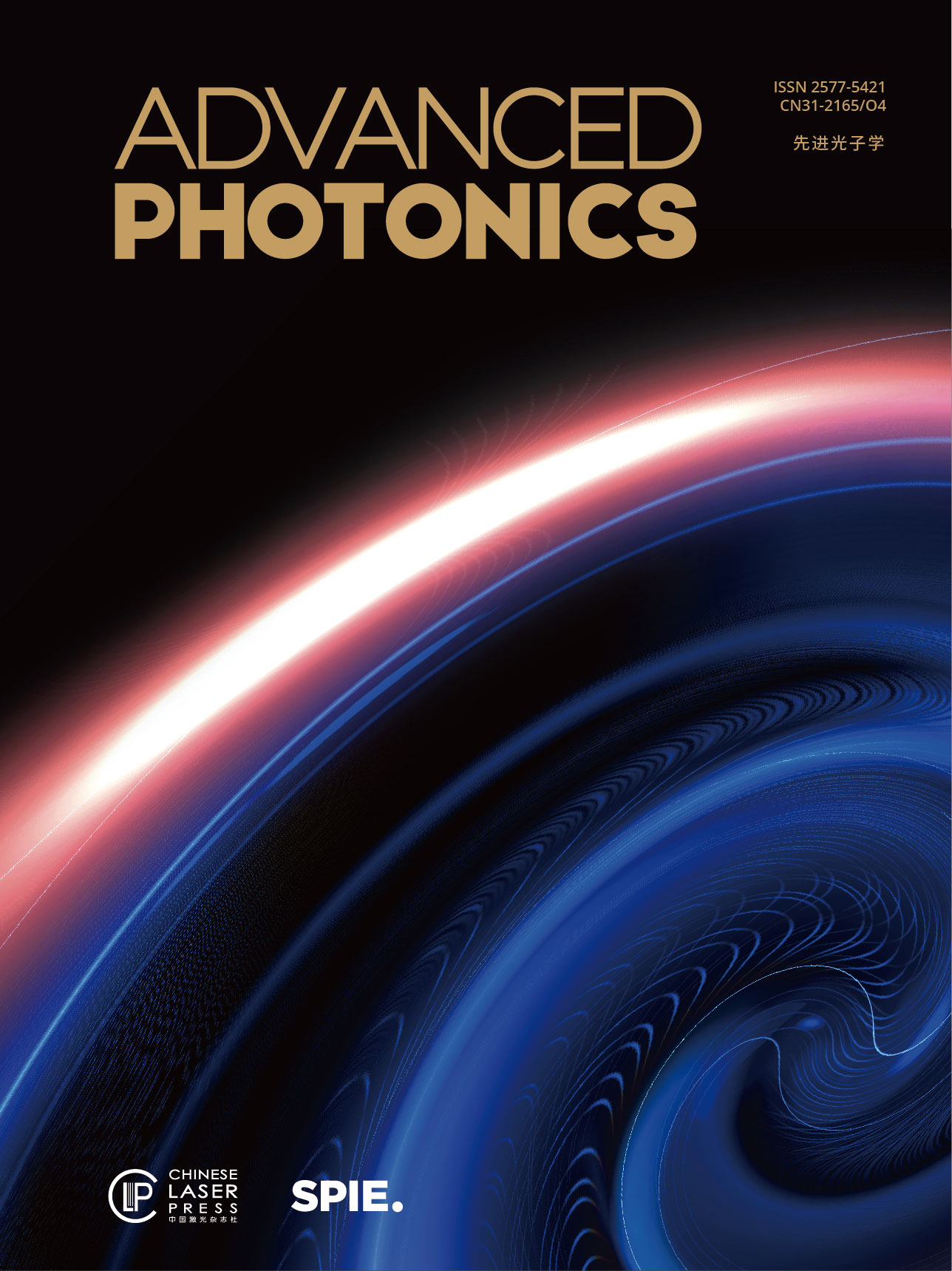Chromatic aberration-free meta-devices is realized by satisfying the key criteria of desirable phase dispersion and high reflection amplitudes, which largely enhances the working bandwidth and greatly improves the efficiency.

Ultra-wideband chromatic aberration-free meta-mirrors, from Tong Cai et al., doi: 10.1117/1.AP.3.1.016001.
The manipulation of electromagnetic (EM) waves with high-efficiency and wideband is of great importance to increase the accuracy and efficiency of integrated optics components, especially for chromatic aberration-free meta-devices. Metasurfaces, as planar version of 3D metamaterials, provide a powerful capability to manipulate the amplitude, phases and polarizations of EM waves, leading to a lot of fascinating phenomena and effects, such as anomalous refraction and reflection, planar meta-holograms, achromatic meta-lenses, surface plasmon polaritons (SPP) meta-couplers. However, it is still a great challenge to design chromatic aberration-free meta-devices with both high efficiencies and ultra-broad bandwidth. Some Pancharatnam–Berry metasurfaces extend the working bandwidth of chromatic aberration-free meta-devices, while the efficiencies are very low due to the low reflection or transmission property of these metasurfaces.
As reported in Advanced Photonics, researchers from the Zhejiang University, China, have made a significant advance in chromatic aberration-free meta-devices with high-efficiency and wideband properties. As proof of the concept, two kinds of microwave meta-mirrors are designed/fabricated with very high efficiencies in frequency interval of 8-12 GHz (in the range of 85%-94%). One is the achromatic meta-mirror, which can achieve the same deflection angle at different frequencies. The other one is the abnormal chromatic meta-mirror, which can deflect the incident waves as a linear function of frequency.
Freely aberration correction
The key to achieve freely aberration correction under high efficiency and broadband conditions is to manipulate the phase dispersion and reflection amplitude simultaneously. Here, the desirable phase dispersion is tuned successfully based on a multi-resonant Lorentz model. The reflection phase variation range can be enlarged by mutual interactions among multi-resonant system, and the phase spectra slope can be modulated by carefully tuning these resonances. The high reflection is guaranteed by the presence of the metallic ground.
Achromatic meta-mirror
An achromatic meta-mirror with high-efficiency and ultra-wideband properties is designed. Within the target frequency band, most incident EM waves are reflected to an identical angle 30°, and other undesired modes are totally suppressed. The working efficiency, defined as the ratio between the power taken by the desired anomalously deflected mode and the incident power at different frequencie, lies in the range of 85%-91% within the working frequency interval.
Abnormal chromatic meta-mirror
As the second example, an abnormal chromatic meta-mirror is designed by manipulating the bending angles as a linear function of frequency. To the best of the author's knowledge, it is the first time to control the deflection angle within broadband. The theoritical reflection phase spectrum for each meta-atom is as a function of frequency, as shown in Fig. (a). The meta-device sample, consisting of 16×20 meta-atoms, is shown in Fig. (b). The wave-manipulation performance of this meta-mirror is experimentally examined, with the angular scattering distributions shown in Fig. (c). It is clear that most incident power is reflected to an oblique angle as predesigned. Figure (e) depicts the simulated and measured efficiencies, which is better than 85% (86%) for measurements (simulations) within the target 8-12 GHz (see Fig. e), further reforced by the electric field distributions in Fig. (d). This work establishes a solid platform to efficiently manipulate EM waves within broad band, and can stimulate the realization of high-performance optical components.

(a) Theoretical calculated reflection phase distributions of 16 meta-atoms against frequencies. (b) Pictures of the fabricated sample of meta-mirror. (c) Measured scattered-field intensity (color map) versus frequency and detecting angles at reflection space. (d) The measured  distributions on xoz plane. (e) Simulated and measured absolute efficiencies of the novel abnormal chromatic meta-mirror.
distributions on xoz plane. (e) Simulated and measured absolute efficiencies of the novel abnormal chromatic meta-mirror.
Read the original research article by Tong Cai et al., "Ultrawideband chromatic aberration-free meta-mirrors," Adv. Photon. 3(1), 016001 (2021), doi: 10.1117/1.AP.3.1.016001.


